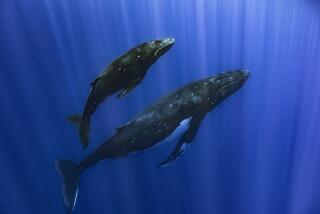Baby wrens must chirp a secret password to be fed, study finds
- Share via
The nestlings of fairy-wrens don’t have much of a choice when it comes to listening to their mothers: The birds must reproduce a particular sound learned from their moms to be fed, according to a study published Thursday in the journal Current Biology.
The researchers, led by Sonia Kleindorfer of Flinders University in Australia, call the sound the bird’s “learned password.”
The team discovered the remarkable mother-chick ritual by chance when they noticed that the mothers were aiming calls at their eggs well before they hatched. So they set out to determine why. First, the researchers realized that the call made by the nestlings in order to be fed was different in each nest, suggesting it might be learned.
The pieces began to come together when the team also observed that each nest’s begging call — the password the nestlings need — was contained within the call that the mothers made to their unhatched eggs. In order to prove that the chicks were learning the sound from their moms rather than the song being innate, Kleindorfer and her team swapped the eggs from two different nests. Once hatched, the chicks produced the begging call of their foster moms, not their birth moms, proof the call was in fact learned in the egg.
Finally, to prove that the call was related to feeding, the researchers placed a speaker next to the nest and played sounds that made it impossible for the mother to hear the begging call. By disrupting the password, they were able to prevent feeding.
Kleindorfer and her team believe this intricate back-and-forth between mother and nestling developed to prevent another species of bird — parasitic cuckoos — from invading the nest and stealing the fairy-wrens’ food.
The findings may have implications for species evolution, suggesting that traits we once believed were genetically passed down may in fact be learned. In other words, the authors write, “There is now no doubt that some seemingly innate traits are the result of experience during the embryonic stages.”
Return to the Science Now blog.






